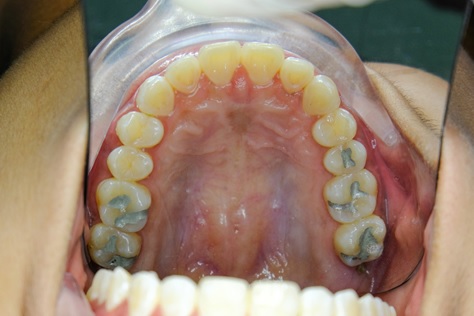Also referred to as silver fillings, amalgam is a material that is commonly used to fill dental caries. Although they’ve been used for decades, recent findings have questioned the safety of the fillings because they contain mercury. If you are concerned about whether amalgam fillings are safe for you or your child, these are some common answers to the most frequently asked questions about silver fillings.

What is amalgam?
Silver Amalgam fillings aren’t really all silver, as the name might imply. Amalgam is a material that comprises many different metals, and it has been used for dental fillings for over 150 years. It contains metals in varying degrees like tin, copper, mercury, and silver. There are also trace amounts of indium, palladium, and zinc in some mixtures.
Many people have stopped choosing amalgam fillings for aesthetic reasons. Innovative tooth-colored materials are now available that help to restore the natural look of your teeth. So, although amalgam is still an option, it is one that isn’t used as much anymore as it has been in the past. Amalgam is a less expensive material, however, so it is still used; in some instances, it holds up better over time, so it can be better for those teeth that get the most wear and tear.
Is amalgam safe?
To date, millions of people all over the world have had amalgam fillings, but concern has recently been raised because they contain mercury, which is a highly toxic metal. Many studies have been conducted on the safety of amalgam use. The US Food and Drug Administration launched a large-scale research study to evaluate the material. What they found was that there were no health issues or risks related to using amalgam. Therefore, the FDA has deemed it safe for both adults and pediatric patients over the age of six. However, there are some who question those findings and insist that more investigation needs to be done.
Why does amalgam contain mercury?
Metal is typically not a malleable material, which is why mercury is added to the mixture. Mercury is a highly pliable metal and when mixed with alloy powder, it can help make a very soft mix that conforms to the tooth. Once it fits with the tooth, the metal compound quickly hardens and holds fast. After the metal has hardened, it can withstand a lot of wear from chewing and biting.
Why are there concerns about mercury being in amalgam?
Mercury is found in abundance in the environment; it can also exist as a liquid, like when it is used in thermometers. When it is subjected to heat it can convert to a gas, just like any other metal material. Everyone is exposed to varying amounts of mercury through food, soil, water and even air. Due to pollution, the amount of mercury exposure has continued to mount. There is evidence that it can build up in the organs of those who are exposed and cause chronic health conditions.
The range of side effects that anyone can suffer when exposed to mercury is related to the amount of it that they are exposed to. Very low exposure usually does not have any side effects. When people are exposed to high levels of mercury, however, there are significant side effects including memory loss, irritability, fatigue, anxiety, and headaches.
The reason that people question whether amalgam is healthy is that there is the risk of exposure, and many wonder how great that risk is to those with amalgam fillings. When they were first placed, the thought was that once the metal was hardened, the fillings were inert and that no mercury could be released into the body. But in recent studies, researchers have found that mercury can be released into the body as the filling begins to deteriorate over time.
If you are going to have work done, it is a good idea to ask your dentist about whether amalgam is the appropriate material to use for fillings. If there is even a question of its health consequences, then there might be more viable and safer materials to use that are just as effective and do not jeopardize your health.
